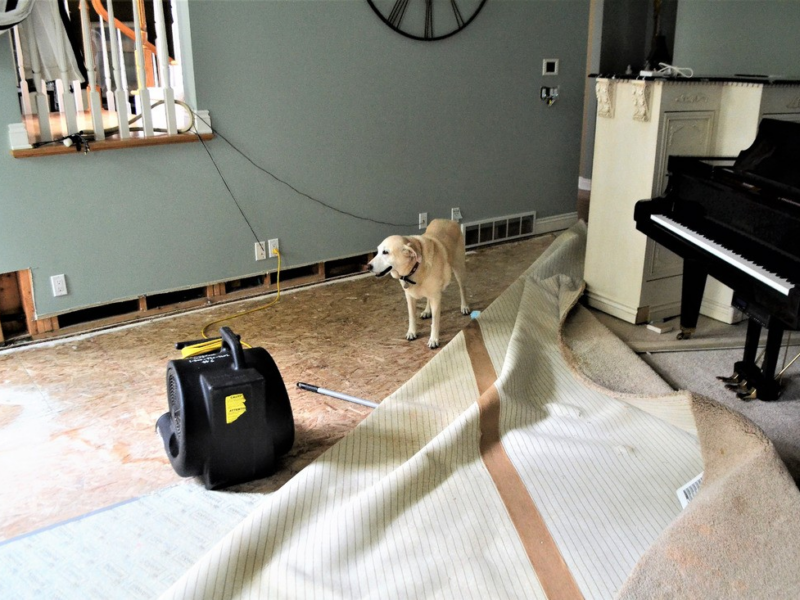
Water Damage during Health Department Inspections: Prevention and Restoration
Water damage is a common issue that can occur in various settings, including commercial establishments such as restaurants, hotels, and hospitals. Health department inspections play a crucial role in ensuring the safety and hygiene of these establishments. It is important to understand the causes, prevention, and restoration methods of water damage to comply with health standards and maintain a healthy and safe environment.
Causes of Water Damage during Health Department Inspections

Water damage can be caused by several factors, including leaking pipes, plumbing issues, roof leaks, improper drainage, and natural disasters such as floods. In commercial establishments, these issues can significantly affect the overall cleanliness and safety of the premises.
Leaking pipes and plumbing issues are one of the main culprits behind water damage during health department inspections. Over time, pipes can deteriorate, leading to leaks that can go unnoticed until they cause extensive damage. Roof leaks can also result in water infiltration, especially during heavy rains or storms. Improper drainage can cause water to accumulate and seep into the building’s structure, leading to potential mold growth and structural damage.
Prevention of Water Damage during Health Department Inspections
Preventing water damage during health department inspections is crucial to maintain a healthy and safe environment. Here are some preventive measures that establishments can take:
1. Regular Maintenance: Establishments should conduct regular inspections of their plumbing systems, roof, and drainage to identify and address any potential issues that could lead to water damage.

2. Prompt Repairs: Any leaks or plumbing issues should be repaired immediately to prevent them from worsening and causing extensive damage.
3. Proper Drainage: Ensuring proper drainage around the premises can prevent water accumulation and potential water damage.
4. Monitoring Humidity Levels: Maintaining optimal humidity levels within the establishment can help prevent mold growth, which can thrive in moist environments.
5. Staff Training: Training staff members on water damage prevention and reporting any signs of water damage promptly can help identify and address issues before they escalate.
Restoration of Water Damage during Health Department Inspections
In cases where water damage has already occurred, prompt restoration is essential to minimize further damage and restore the establishment to a safe and healthy state. Here are some key steps involved in water damage restoration:
1. Water Extraction: The first step in water damage restoration is removing excess water from the affected areas using specialized equipment such as pumps and vacuums.
2. Drying and Dehumidification: After extracting the water, the affected areas should be thoroughly dried using air movers and dehumidifiers to prevent mold growth and further damage.
3. Cleaning and Sanitization: All affected surfaces, furniture, and equipment should be cleaned and sanitized to remove any potential contaminants and ensure a safe environment.
4. Restoration and Repairs: Any damaged structures or materials should be repaired or replaced to restore the establishment to its pre-damage condition.
Water Damage Statistics
Understanding the impact of water damage can further emphasize the importance of prevention and effective restoration. Here are some key facts and statistics about water damage:
1. Over 10% of households in the United States leak over one trillion gallons of water every year.
2. Minor leaks and drips can waste over 90 gallons of water per day, leading to increased water bills.
3. The typical price range for restoring water damage is between $1,240 and $5,342.
4. Mould and mildew growth can start within 24 hours of water damage, highlighting the importance of prompt restoration.
FAQs
1. What are the common causes of water damage during health department inspections?
Water damage during health department inspections can be caused by leaking pipes, plumbing issues, roof leaks, improper drainage, and natural disasters such as floods.
2. How can water damage be prevented during health department inspections?
Preventive measures include regular maintenance, prompt repairs, proper drainage, monitoring humidity levels, and staff training on water damage prevention.
3. What steps are involved in water damage restoration?
Water damage restoration typically involves water extraction, drying and dehumidification, cleaning and sanitization, and restoration and repairs.
4. What are some important facts and statistics about water damage?
Water damage can result in significant water wastage, increased water bills, and costly restoration expenses. Prompt restoration is essential to prevent mold and mildew growth.
5. How much does water damage restoration typically cost?
The typical price range for water damage restoration is between $1,240 and $5,342, depending on the extent of the damage.
Sources:
– Water Damage Statistics [2023]: Claim Data & Facts
– Starting Your Recovery After a Flood
– Important Facts & Figures about Water Damage & Restoration
– Restoration and Reconstruction: 3 Interesting Facts About Water Damage



